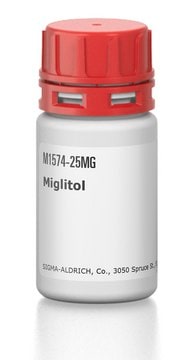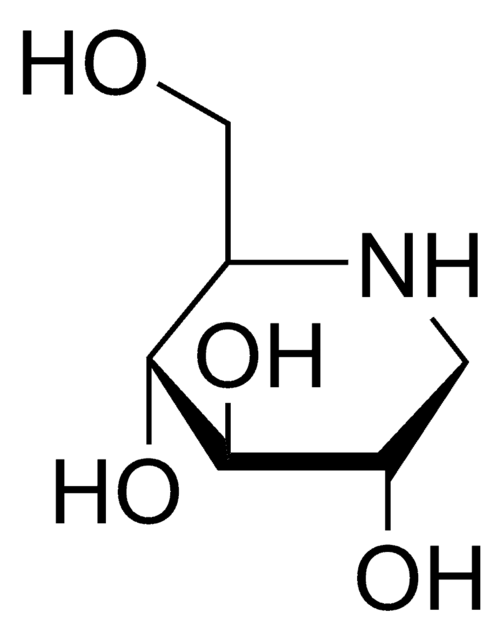All Photos(1)
About This Item
Empirical Formula (Hill Notation):
C10H14N2 · HCl
CAS Number:
Molecular Weight:
198.69
EC Number:
MDL number:
UNSPSC Code:
12352100
PubChem Substance ID:
Recommended Products
Assay
99%
mp
247-250 °C (lit.)
SMILES string
Cl[H].C1CN(CCN1)c2ccccc2
Signal Word
Danger
Hazard Statements
Precautionary Statements
Hazard Classifications
Acute Tox. 3 Dermal - Acute Tox. 3 Inhalation - Acute Tox. 3 Oral - Eye Irrit. 2 - Skin Irrit. 2 - STOT SE 3
Target Organs
Respiratory system
Storage Class Code
6.1C - Combustible acute toxic Cat.3 / toxic compounds or compounds which causing chronic effects
WGK
WGK 3
Flash Point(F)
Not applicable
Flash Point(C)
Not applicable
Personal Protective Equipment
dust mask type N95 (US), Eyeshields, Gloves
Certificates of Analysis (COA)
Search for Certificates of Analysis (COA) by entering the products Lot/Batch Number. Lot and Batch Numbers can be found on a product’s label following the words ‘Lot’ or ‘Batch’.
Already Own This Product?
Find documentation for the products that you have recently purchased in the Document Library.
Gürkan Keşan et al.
Spectrochimica acta. Part A, Molecular and biomolecular spectroscopy, 88, 144-155 (2012-01-10)
New metal halide complexes in the form of M(pp)(2)Cl(2) (where pp=1-phenylpiperazine and M=Pd or Hg) have been prepared for the first time and their FT-IR and FT-Raman spectra are reported in the region of 4000-10 cm(-1) and 4000-50 cm(-1), respectively.
Tiantian Mou et al.
Applied radiation and isotopes : including data, instrumentation and methods for use in agriculture, industry and medicine, 67(11), 2013-2018 (2009-08-15)
This study reports the synthesis and characterization of N-(3-(4-(2-methoxyphenyl)piperazin-1-yl)propyl-4-[(18)F]fluorobenzamide ([(18)F]MPP3F). The total reaction time for [(18)F]MPP3F, including final high-performance liquid chromatography purification, was about 3h. Typical decay-corrected radiochemical yield was 18.4+/-3.1%. The radiochemical purity was >98%. Biodistribution in mice showed
Katharina Ehrlich et al.
Journal of medicinal chemistry, 52(15), 4923-4935 (2009-07-18)
Assembling phenylpiperazines with 7a-azaindole via different spacer elements, we developed subtype selective dopamine receptor ligands of types 1a,c, 2a, and 3a preferentially interacting with D4, D2, and D3, respectively. To complete this set, the methylthio analogues 2b and 3b exceeding
Sabine Linz et al.
Bioorganic & medicinal chemistry, 17(13), 4448-4458 (2009-06-02)
A series of phenylpiperazine-methyl-substituted 1H-pyrrolo[2,3-c]pyridine, imidazo[1,2-c]-, pyrrolo[2,3-d]- and pyrrolo[3,2-d]pyrimidines were prepared as selective dopamine D4-ligands. The pyrrolo[2,3-d]pyrimidine derivatives 12d (K(i)=1,9 nM) and 34 d (K(i)=2,4 nM) as well as the pyrrolo[3,2-d]pyrimidine Mannich base 49f (K(i)=2,8 nM) showed high dopamine D4
Jadwiga Handzlik et al.
Bioorganic & medicinal chemistry letters, 20(20), 6152-6156 (2010-09-04)
A series of phenylpiperazine derivatives of phenytoin was evaluated for their affinity at α(1)-adrenoceptor subtypes in functional bioassays (rat tail artery: α(1A) and/or α(1B); guinea pig spleen: α(1B); rat aorta: α(1D)). The most potent compounds at α(1A)-, α(1B)- and α(1D)-adrenoceptors
Our team of scientists has experience in all areas of research including Life Science, Material Science, Chemical Synthesis, Chromatography, Analytical and many others.
Contact Technical Service









